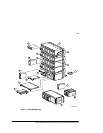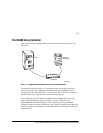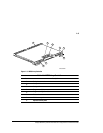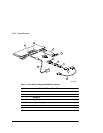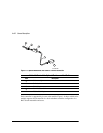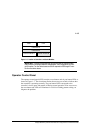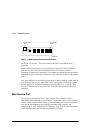
1–8 General Description
From the host’s perspective, the controller is simply another device connected to one
of its I/O buses. Consequently, the host sends its I/O requests to the controller just as
it would to any SCSI device. From the subsystem’s perspective, the controller
receives the I/O requests and directs them to the devices in the subsystem. Because
the controller processes the I/O requests, the host isn’t burdened by the processing
that’s typically associated with reading and writing data to multiple storage devices.
Figure 1–3 shows an HSZ80 Array Controller. Figure 1–4 shows the parts used in
configuring it and Table 1–4 lists the descriptions and part numbers.
NOTE: The maintenance port cable shipped with the controller has a 9-pin
connector for a PC connection only. If you are using a terminal instead of a PC or if
you have a system with a DB25 connection, you can obtain a cable as shown in
Figure 1–5 on page 1–12 from the local field service office.
To determine which parts you need for your configuration, you must have an idea of
the type of configuration you will be running in your subsystem. See the following
sections for your configuration type:
■ “Configuring a Single Controller,” page 2–5
■ “Configuring Dual-Redundant Controllers in Transparent Failover Mode,”
page 2–10
■ “Configuring Dual-Redundant Controllers in Multiple-Bus Failover Mode,”
page 2–16
The components that you’ll use most often are conveniently located on the
controller’s front panel, such as the maintenance port and the operator control panel
(OCP). The host port and program-card slot are also located on the front panel,
making it easy to update the controller’s software or to connect the controller to a
different host.






